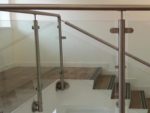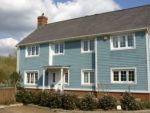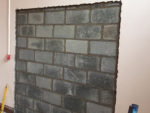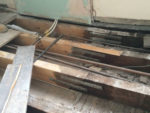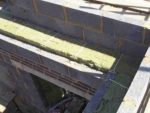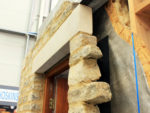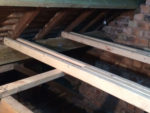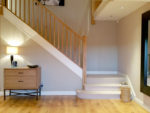To restore a property usually means to bring it back to its former glory where as to renovate means to renew parts of the house. Both of these meanings carry the same problem. Sometimes the previously used materials or products are no longer available. The difficulty then becomes how to maintain the property using new materials and products. This may seem a problem but be assured that for every building material that every existed there is now a contemporary replacement which is usually more energy efficient and ecologically friendly.
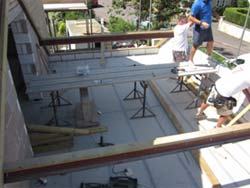
Putting steel purlins into a roof to build a loft conversion
Restoration and renovation usually mean making a mess and one of the first things to do is cordon off parts of the house that you intend to live in while the renovation work is being undertaken. We suggest using plastic sheets fixed to walls, floors and ceilings to achieve this with temporary doorways placed in them.
This section walks you through the problems associated with replacing damaged brickwork, supporting load bearing walls, tying brick walls together or tying the brick walls to block walls. You will learn how to fix new studwork to old masonry, how to plaster and render masonry surfaces and how to create a loft hatch in an old ceiling.
We show you how to repair ceilings, how to replace floors and how to insert new door liners and frames. Detecting dry and wet rot is simplified here and all forms of damp detection and remedial work are given good coverage. We look at garage conversions, loft conversions and working in a basement to provide storage solutions, a bedroom or a bathroom. We show you how to tank walls against damp and how to create flagstone steps into your garden.
We touch on repairing timber beams and strengthening them and all types of roof joist and roof rafters are explained. There is information on inserting and covering an rsj as well as pages and pages on how to decorate the building once you have finished.
So if you want to knock your house down and start again or just add an ensuite toilet to a basement or attic room, just read on…….

